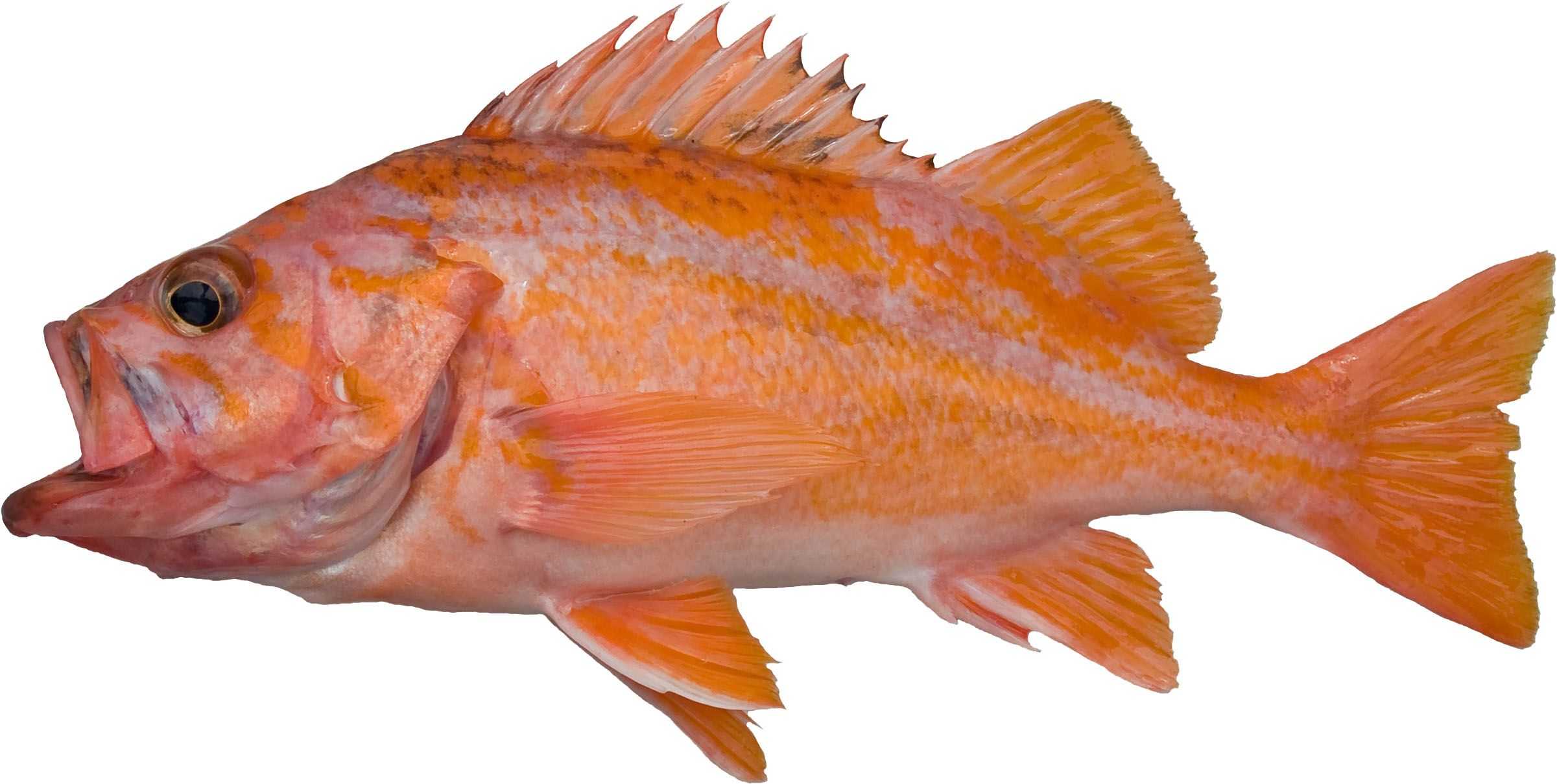Canary Rockfish

Species Details
Sebastes Pinniger
Sebastidae
Scorpaeniformes
Nearshore, Reef
8 - 10 lbs.
14" - 30"
About the Canary Rockfish (Sebastes pinniger)
Canary rockfish are large fish that have mottled yellow and orange markings on the top and are typically light gray on the bottom with a gray lateral line. They have three distinct orange stripes across their head with bright yellow-orange fins and may have dark marks on the end of their spiny dorsal fin.
Canary rockfish have large heads and the underside of their jaw is smooth without ridges or scales. They have a curved profile with a forked tail and hardened spines along their back adjacent to a flat dorsal fin. They may seem similar in appearance and color to yelloweye and vermillion rockfish.
Adult canary rockfish generally gather in loose schools over rocky bottoms, while juveniles may be found in shallow waters.
Diet and Size
Canary Rockfish eat a variety of things. They eat invertebrates and small fishes such as anchovies, sanddabs, and other small fishes. They are also known to eat krills and other smaller Rockfishes such as Black Rockfishes.
The average length of canary rockfish is 20-23 inches long, but the world record has been reported at 30 inches with a weight of 10 pounds. Generally, half of adult canary rockfish are considered adults when they reach 14 inches in length, which is approximately 5 to 6 years of age.
Interesting facts about the Canary Rockfish
- They can live up to 75 years, longer than the typical human lifespan
- On average, they can live up to 44 years.
- Specimens less than 14 inches in length have dark markings on the posterior part of the dorsal fin
Habitat & Distribution
Canary rockfish can usually be located in the area between Cape Colnett, Baja California, and the Western Gulf of Alaska up north. Their numbers tend to swell in number near the coast of central Oregon.
Juvenile canary rockfish favor shallow waters near areas with complex structures. They are typically found near rocky reefs, kelp forests, and man-made structures such as oil platforms. When they mature, they dwell on rocky bottoms offshore in deeper water. They are known go around as a school, most commonly found along the Pacific Northwest coast.
The birthing process of canary rockfish is unique in comparison to other bony fish. Fertilization and development of the embryo occur inside the female rockfish. The eggs then hatch insider of the female and they give birth to live larval young. This classifies them as “ovoviviparous” fish.
They produce a large number of eggs, with one female having anywhere between 260,000 to 1.9 million eggs. Consequently, they may give birth to about 100,000 to 1.5 million larvae, depending on the female's size and age.
The canary rockfish also change their diets when they mature. As larval fish, they feed on algae (specifically diatoms, dinoflagellates, and tintinnids) and water fleas. Juveniles consume small crustaceans (copepods) and krill. When they mature as adults, their diets include demersal (bottom-dwelling) invertebrates and smaller fishes, including other types of rockfish.
Canary rockfish take a longer time to grow, take more time to mature, and generally have a longer lifespan. Females take approximately 13 years to mature and can live for up to 30 years.
Canary Rockfish Fishing
Canary rockfish were officially declared overfished in 2000, but due to quick action by environmental authorities, their population has returned to safe numbers. The decline was caused by a combination of overfishing, being captured as bycatch in other fisheries, and its slow maturing process.
Furthermore, deepwater fish such as the canary rockfish are often not considered game fish because the specimens often do not survive after being released back into the water. This is more commonly known as barotrauma - which is a result of the change in pressure as they rise to the surface quickly. If fishing for them, anglers should use a descending device, which aids in returning the fish to deeper waters and increases its survival rate.
As game fish, they readily take bait and lures. Fishing is usually best in floating schools in offshore areas and can provide anglers a large number to choose from. Using rubber-tail jigs, shrimp flies or baited hooks work well in these suspended schools.






